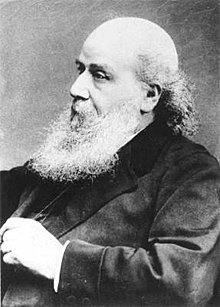

The Euler line of a triangle is mostly valued, not for any practical application, but purely as a beautiful, esoteric example of post-Greek geometry. However, the following theorem by the British mathematician James Joseph Sylvester (1814-1897) involves an interesting application of forces that relate to the Euler line (segment).
Theorem of Sylvester
The resultant of three equal forces OA, OB and OC acting on the circumcentre O of a triangle ABC, is the force represented by OH, where H is the orthocentre of the triangle (hence, the resultant OH = 3OG).
The result generalizes to forces acting similarly on any point as follows and as shown in the interactive sketch below.
Generalization
The resultant of three forces PA, PB and PC acting on any point P of a triangle ABC, is the force represented by 3PG = PQ, where G is the centroid of the triangle.
A generalization of Sylvester's theorem to any point in a triangle or quadrilateral
Challenge
Can you explain why the result is true? (I.e. prove it?) First try yourself, but if stuck, click on the button on the bottom left in the sketch to show some constructions that might assist you in using the parallelogram law of forces to prove the result.
Quadrilateral generalization
The resultant of four forces PA, PB, PC and PD acting on any point P of a quadrilateral ABCD, is the force represented by 4PG = PQ, where G is the centroid of the quadrilateral.
Challenge
Can you explain why this result is true? (I.e. prove it?) Can you generalize further to other polygons or to 3D? See Sylvester's theorem for a tetrahedron.
Reference
See my 2012 Mathematical Gazette paper Generalizing a problem of Sylvester for more details.
Related Links
Euler line proof
Further Euler line generalization
Euler-Nagel line analogy
Nine Point Conic and Generalization of Euler Line
Spieker Conic and generalization of Nagel line
Investigating circumcentres of iterated median triangles
The quasi-Euler line of a quadrilateral and a hexagon
Nine-point centre & Maltitudes of Cyclic Quadrilateral
The Center of Gravity of a Triangle
Experimentally Finding the Medians and Centroid of a Triangle
Experimentally Finding the Centroid of a Triangle with Different Weights at the Vertices (Ceva's theorem)
Centroid (centre of gravity) of Cardboard Quadrilateral
Point Mass Centroid (centre of gravity or balancing point) of Quadrilateral
More Properties of a Bisect-diagonal Quadrilateral
Quadrilateral Balancing Theorem: Another 'Van Aubel-like' theorem
Van Aubel Centroid & its Generalization
External Links
Parallelogram rule for the addition of forces (Wikipedia)
Sylvester's triangle problem (Wikipedia)
SA Mathematics Olympiad Questions and worked solutions for past South African Mathematics Olympiad papers can be found at this link.
(Note, however, that prospective users will need to register and log in to be able to view past papers and solutions.)
********************************
Back to "Dynamic Geometry Sketches"
Back to "Student Explorations"
Created by Michael de Villiers, August 2012 using JavaSketchpad; updated 15 September 2012; updated to WebSketchpad 18 August 2020; 13 July 2025.